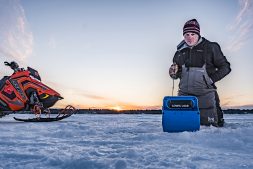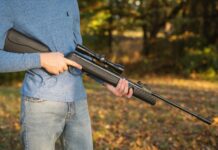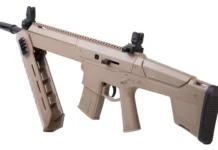 It’s coming quick this year – ice season. Often early ice can be one of the best times of year, so let’s get ready!
It’s coming quick this year – ice season. Often early ice can be one of the best times of year, so let’s get ready!
We use two types of rods when ice fishing for walleyes. One is for jigging and one is a dead stick, which is simply hanging a bait in a secondary hole.
One of the things that makes catching walleyes tricky is the way they bite. They don’t really bite a bait, they suck it in. As they move close to their prey, they open their mouth, flare their gills and suck a volume of water, hopefully containing your bait, into their mouth. Then with their sharp teeth they hold the bait in their mouth, waiting for it to quit struggling while determining if they want to swallow it. If they detect something is wrong (bad taste, too much resistance, wrong texture) they just open their mouth, slam their gills tight and blow the bait out. The problem is this can all happen is less than a second!
So as a walleye angler, we need sensitivity in our equipment to not only feel a soft bite, but to feel it quickly and then set the hook before the walleye spits out our offering.
The hookset can often be problematic with walleyes, as their mouth is very boney. To set the hook point into their mouth you have to make your lure move inside the mouth, so it can drive into those bones. With a walleye this can often be difficult because of the way they are holding that bait solidly in their teeth. A hard, solid hookset, is imperative.
Lastly, the rod needs to be able to handle the fight of a walleye. Since the rods are short, normally less than 3-feet, you don’t have a nice long bow in the rod to take up the head shaking of a big walleye. These head shakes are amplified by the use of no-stretch lines (see below). So, a good walleye ice rod needs to be able to absorb the pull of the fish.
It is also important with this short length be able to keep continuous tension on the fish, so it can not throw the bait. Add to that the issue of having to fight the fish up through a small hole and you must have the right action to consistently land fish.
Jigging Rod
This is the rod you’re working by popping, dropping, jiggling, and pounding as you try to entice a walleye to first get interested, and then to strike. We use a couple of different rods for jigging. The Clam Ice Team Professional Series 26” Medium Action Walleye Rod and the JT Outdoors 30″ Gold Digger are great all-around rods. For targeting bigger walleye, we use the JT Outdoors 34″ Black Reign. All of these rods have similar attributes. The shorter ones are particularly good in one-man shacks like the Clam Legend XL Thermal and the longer rods for bigger shacks like the Clam X200 Pro Thermal.
These rods are all super sensitive and lightweight. When fishing in cold conditions, walleyes often don’t hit the bait very aggressively, once again, they are just sucking it in. Also, many times you will be getting bites as the fish chases your bait in an upward direction, so it is hard to detect the bite because they are pushing slack in the line as they bite while they swim toward you. You’ve got to be able to feel them to move on to the next step – setting the hook!
To increase sensitivity, we use a no stretch line as our mainline. The best choice out there is Berkley NanoFil. NanoFil is a uni-filament line, meaning it is a single strand of no-stretch material with no braiding or weaving. The no-stretch attribute greatly increases your ability to feel what is often a subtle bite. The beauty of uni-filament is that it does not retain water in the line, so ice build-up is greatly reduced. Nothing dampens sensitivity more than a big glob of ice on the line! The ice that does build up on NanoFil is on the outside of the line and is quickly taken off with a single sweep between your fingers. For walleye fishing, 8-10lb NanoFil is best.
Often in ice fishing conditions, the water is much clearer than in summertime. There is no algae or sediment from wind to cloud things up. For this reason, you will want to use a Fluorocarbon leader to make the line that is tied to the bait nearly invisible. We use a small #14 to #18 swivel to attach the NanoFil to the Fluorocarbon leader. The length and pound test of the leader depends on conditions. If you are targeting larger fish, then lean towards a 10lb leader made with Berkley Professional Grade 100% Fluorocarbon. For smaller fish or in super clear conditions, you might go as light as 6lb Fluorocarbon. A standard leader length is 2-feet, although in gin clear water a 4-foot one is not uncommon.
The nice thing is that you can rig your reel one time with NanoFil and then adjust your leader to the situation. You can even quickly change to a 2-pound leader if some nice crappies happen to show up! A power hookset can be achieved with these rods because they all fast taper. This means that only the last few inches of the rod have a lot of bend. Since the majority of the rod is stiff, it has a strong backbone and thus amazing hook setting power.
With the few inches on the end of the rod being extremely flexible, you have some rod bend during the fight. It is a very specific action to get the right power in the backbone but flexibility in the tip, and these three rods nailed it!
Dead stick
There are a couple instances when we use dead sticks. The first is when walleyes are in a finicky mood. Often hanging a rod with a simple jig and live minnow in a hole next to where we are jigging produces better than the jigging rod. Jigging is still important to draw the fish in, but we see it on our Lowrance HDS units all the time, a walleye comes in and looks at the jig rod, doesn’t bite, but fades over to the jig and a minnow and slurps it in.
Second, we are also big proponents of using JT Outdoor Hot Boxes for our dead sticks. These boxes have a propane heat source in them to keep the hole clear of ice, so they can be set up remotely from our shacks. They are very portable and quick to set up. These boxes really give us big advantages! If you are fishing a flat or basin area by spreading out lures similar to how you would use planer boards in the summer, you can multiply your results. If you are fishing structure it is nice to be able to set up rods in several depths. Try jigging in a shack at the top of the break with a Hot Box set at the middle or bottom of the break to cover several depths.
In any situation, the big difference between a jigging rod and a dead stick is that you’re are not typically holding the rod to detect the bite. The walleye is going to suck the bait in and either hold it while determining if it is going to eat it, or it will slowly start to move away. Since there is a delay between the bite and the hookset you need to use a much more limber rod for this set-up. Enter the JT Outdoors 36” Walleye Snare Rod. This is one of the coolest rods out there for ice fishing! It is super flexible at the tip to about half way down the rod. You could call this rod action Slow Taper. The idea is that the walleye will suck in the bait and feel little or no resistance from the rod. Remember too much resistance will make them want to spit the bait.
The Snare Rod has a built-in red ball at the end of the rod, so even at a distance you can see the slightest bite as the rod tip and ball will move slightly down. When you get to the rod at this point, a solid sweeping hookset will double over the Snare Rod enough to get into its strong backbone and drive the hooks home! We have never seen another rod on the market that duplicates this rods ability to trick a walleye into holding on to a bait with its limberness, but still have the hook setting strength of a Snare Rod!
Sometimes, especially with Hot Boxes it might take a while to get to a biting walleye. What’s interesting is that you will catch a surprising number of fish that sit still and hold on to the lure a long time. The other thing that may happen is that once the walleye determines its ok to eat the bait, it will typically swallow the bait a little deeper and it will start to move away. Correspondingly the Snare Rod will double over even more. Often the red ball will even touch the water!
This is where things get interesting. As the Snare Rod bends more and more, it also starts putting more pressure on the fish. Many times the fish will make a sudden move to try to get away. This move often puts the Snare Rod into its strong backbone and the fish will literally set the hook by its self – thus the name Snare Rod! One big advantage of the Snare rod, is once the fish is hooked up, you’ll have all kinds of flex in the rod and fish rarely get off.
Set up the Snare with the same Nanofil mainline and don’t be afraid to drop down a size or two in your leader pound test, this is a more finesse technique, so a lighter leader will often allow the minnow to swim more actively on a light jig.
Two rods, same result – The Next Bite!











































